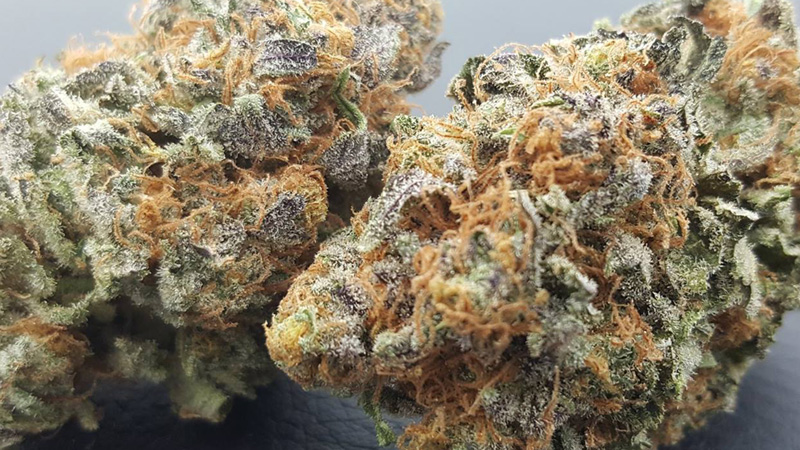For the beginning cannabis enthusiast – sometimes even for the seasoned user – trying to figure out strain names can often feel like using a map without a legend, or visiting a foreign country without knowing the language. Things can become overwhelming pretty quickly. It’s easy to get discouraged. And it’s even easier to feel as though strain names often seem to be chosen totally at random, with little relationship between a strain’s effects and its name. What’s even more frustrating is that the effects of some strains can’t always be reliably predicted, even after several uses.
But neither the beginner nor the veteran need fear; many strains can indeed be trusted by name, and with the help of the geniuses at Grassdoor.com, there’s no reason you can’t settle on a strain you can continue to trust. This article isn’t complete a guide to strain names – check out our primer on Indica strains, or our guide to exotic strains for that kind of info – but it does aim to clear up the question of whether strain names mean anything at all, and whether they can be trusted consistently.
By reliability, we mean that the strain’s effects are consistent – no matter what grower or batch you might get them from. A reliable strain shows predictable effects, and the chemical profile of that strain will also be predicable; that is, it will always have the same levels of cannabinoids and terpenes. Reliability isn’t simply determined by reports given by dispensary customers; rather, exhaustive laboratory testing reveals the individual chemical signatures unique to certain strains. These tests, performed over time and across geographical boundaries, are fundamental in determining strain reliability.
A wide variety of factors can lead to unreliable strains. A grower might rename a less-popular strain after a more popular one to increase sales, or even counterfeit a strain. Further, some strains may become victims of slapdash breeding, and phenotypic differences may be introduced, fundamentally changing a strain’s chemical expression and therefore the high that comes with it. In short, the name stays the same, but the strain it describes changes over time.
The end result? Some strains with the same name can have effects that vary from grower to grower, or even from batch to batch. And you, the user, may find yourself unable to rely on some strains to stay true to their names, or true to what you’ve come to expect from them.
That isn’t necessarily all bad news, however. There’s no such thing as a perfectly reliable strain; tiny changes in the industry, in regulation, and in popularity trends can have ripple effects through time. New strains become trendy. Old ones die out. Technological innovation creates new possibilities across the board. If a grower clings too had to reliability, they may cheat the industry out of real growth.
In the meantime, though, there’s no question that the user needs to know what they’re getting into when they hand over good money for their beloved Sour Diesel or Blueberry Haze. Fortunately, there are many, many strain names out there that the casual cannabis user can count on, and a good dispensary professional can help you spot them.
Perhaps the most reliable, according to significant lab testing, is Blue Dream. Roughly 80 percent of Blue Dream products contain the same terpene profile – myrcene-rich with caryophyllene and pinine offering a strong showing as well – and its cannabinoid profile is so strong that it’s always been a key player in the medical cannabis market, where consistency and predictability are vital. As such, Blue Dream has become widely available – and that gregariousness, paired with its popularity and resulting demand for reliability, have resulted in a very stable strain.
On the other end of the spectrum is something like Durban Poison, which is consistent only in its lack of consistency. As a pure sativa strain that’s often unseen in legal markets, Durban poison combines rarity with a distinct lack of the oversight and attention detail common in legal dispensaries. Because of that rarity, it’s often counterfeited, or a different-yet-just-similar-enough strain will be renamed to meet market needs.
But how can you know whether the strain you need is a safe, predictable Blue Dream or a wild card like Durban Poison? Three relatively simple steps can ensure the reliability you’re seeking:
Develop a checklist of what you want from your cannabis experience. Think about it: All a strain name really does is describe a certain set of effects (in the case of the cannabinoids contained therein) and aromas and flavors (determined by terpenes). By keeping close track of what you like and don’t like, you’ll always be armed with the data to make an informed choice.
Keep abreast of new strains. You might have an old-reliable that always winds up in your online shopping cart, but it never hurts to check out how new strains are developing (and, for that matter, how the classics are evolving). Along with the checklist mentioned above, this can give you substantially more control over your cannabis experience than by simply relying on the same strain every time. Grassdoor’s blog is a great way to keep track of what’s new.
Deal with a knowledgeable and reliable supplier. You can also approach the suppliers at Grassdoor with any questions – simply direct your questions to support@grassdoor.com. Maintaining a good relationship with knowledgeable dispensary professionals is the best way to make sure you get the exact high you’re looking for.
As the industry develops, lab tests and user scrutiny will combine to make strain names more reliable. Indeed, growers and dispensaries want to improve consistency as well as overall quality. Cannabis professionals know that no user wants to order a Big Mac only to bite into a Whopper, and they strive to offer a predictable experience.


